
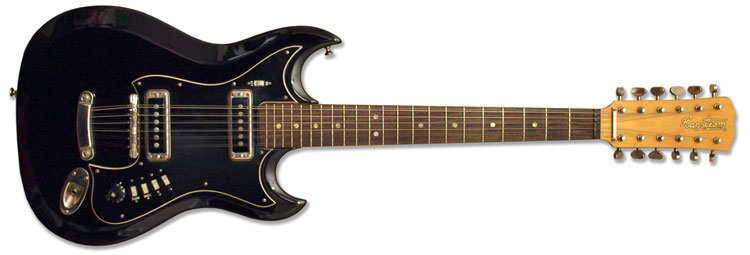

From the 1966 Hagstrom catalogue
“The sensational Hagstrom 12 string electric guitar - projects the full rich quality sound effects of 5 guitars... adds pulsating excitement, amazingly increased tonal range PLUS musical fire to your performance”
 From the 1968 Hagstrom catalogue
From the 1968 Hagstrom catalogue“2 super-sensitive adjustable pickups for the fullest response in all tonal ranges. 4 individual flick-action switches, plus a master volume control”
The Hagstrom 12 (or F-12S in the United States) was a Swedish-built solid body electric guitar produced from 1965 until 1967. It was a two-pickup guitar, very similar to the Hagstrom II (F-200) and Hagstrom III (F-300), and in some ways the Hagstrom eight string bass (F-800). Easy-playing, with a low action and Hagstrom's famous fast neck.
According to the Hagstrom shipping data, a total of 3484 units were produced, in four batches, although it seems at least one, maybe two batches are missing from these records. The guitar below, from batch 706, is not listed in Hagstrom shipping data, and so production may have continued beyond 1967, especially as the model was featured on the cover of the 1968 Hagstrom catalogue.
Hagstrom II (F-200)
Hagstrom III (F-300)
Hagstrom HIIN (F-200N)
The controls on Hagstrom guitars at this time were a little different to those of their competitors. No tone pot, just a volume. Flick switches to select pickups, and two more to activate the tone and mute modes. Check out the soundclips to hear what effect these have on the instruments sound.
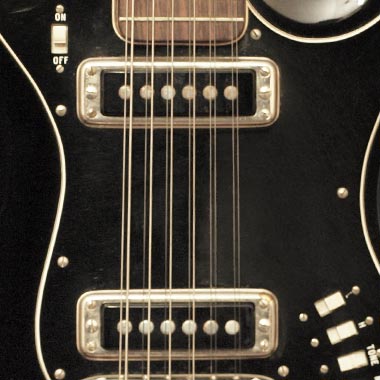
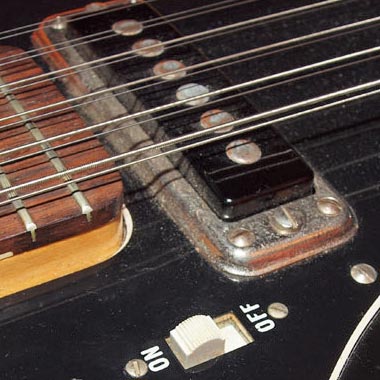
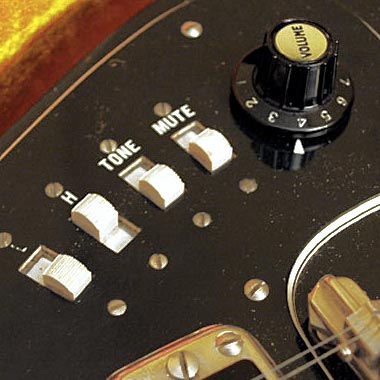
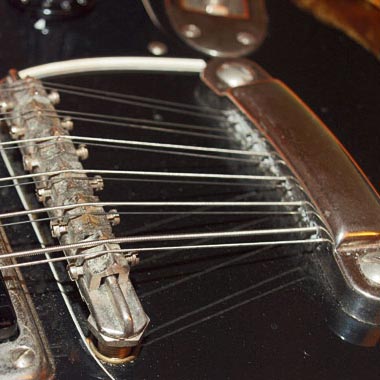
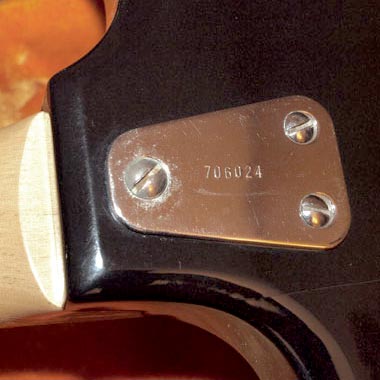
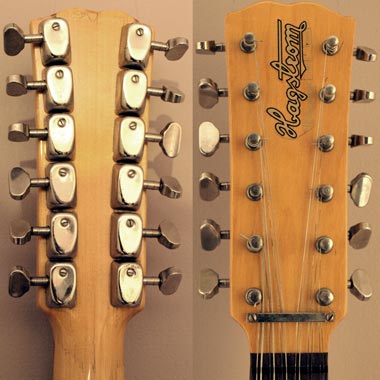
Frank Zappa and the Mothers of Invention featured in a series of advertisements with the Hagstrom 12 in 1967, using the image (left). There were several variations, used both to promote Hagstrom guitars, and their own album Absolutely Free. Another H12 user is Steve Hackett of Genesis. Know any more well-known Hagstrom H12 users? comment
$790
$2000
$1525
$1495